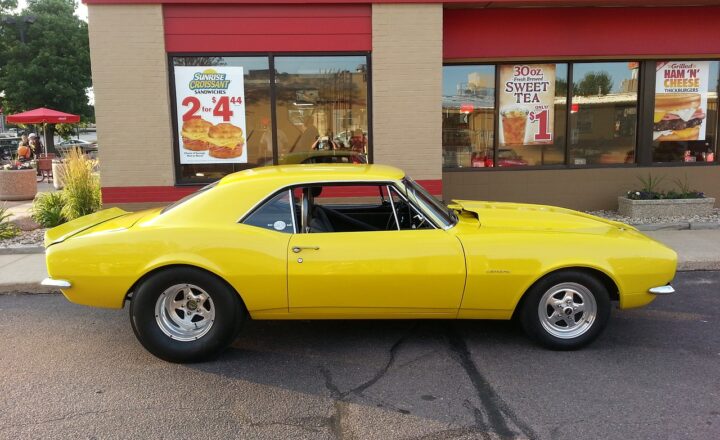The Astonishing Evolution of the Porsche 911: A Legend on Four Wheels
November 18, 2024

The Porsche 911, renowned as one of the most iconic sports cars in automotive history, boasts a legacy that spans decades. This article delves deep into the evolution of the Porsche 911, examining its design, engineering advancements, and cultural significance. Through its remarkable journey from a humble beginning to a symbol of luxury and performance, the 911 has become not just a car, but an emblem of passion and innovation.
1. The Birth of an Icon: Early Years (1964-1969)
The Porsche 911 was first introduced in 1964, designed by Ferdinand “Butzi” Porsche, grandson of the company’s founder, Ferdinand Porsche. It was a significant departure from its predecessor, the Porsche 356, with a more powerful engine and a distinctive design featuring the iconic round headlights and a sloping tail.
– **First Impressions:** The 911 was initially launched with a 2.0-liter flat-six engine, producing 130 horsepower, paired with a five-speed manual transmission. The combination of sleek design and impressive performance captured the attention of car enthusiasts and immediately established its status as a sports car.
– **Growing Popularity:** The car’s success was bolstered by its early participation in motorsports, where it quickly proved its mettle, winning several championships throughout the late 1960s.
2. The 1970s: Innovation and Performance (1970-1979)
As the automotive world evolved in the 1970s, so did the Porsche 911. The introduction of the 911 S and the iconic 911 Turbo (930) marked a turning point for the model.
– **911 S:** Launched in 1966, the 911 S featured increased power and handling improvements, allowing for a thrilling driving experience.
– **The Turbocharged Revolution:** In 1975, Porsche unveiled the 911 Turbo, equipped with a turbocharged engine that produced 260 horsepower, making it a force to be reckoned with. Its distinctive “whale tail” rear spoiler became synonymous with performance.
This era also introduced the 911 Carrera, which further enhanced the vehicle’s racing heritage, setting the stage for the modern 911 lineage.
3. The 1980s: Embracing Change and Adversity (1980-1989)
The 1980s saw the Porsche 911 evolve with the introduction of the 964 series, which represented a significant overhaul of the original design and mechanics.
– **The 964 Series:** This new generation of the 911 brought improvements in aerodynamics, with features like integrated bumpers and a more streamlined body. The 964 was also the first to offer all-wheel drive in the 911 Turbo.
– **Digital Age:** The 964 also introduced electronic features such as an antilock braking system (ABS) and a more sophisticated engine management system, catering to the growing demand for technology in sports cars.
Despite facing challenges such as increased competition and a shift towards more practical vehicles, the 911 persevered and solidified its status in the performance car market.
4. The 1990s: Modernization and Mastery (1990-1999)
The introduction of the 993 marked the final evolution of the air-cooled 911, a testament to the iconic form and performance that established the model’s legacy.
– **The Last Air-Cooled Model:** The 993 was the last of the air-cooled 911s, featuring a distinctively modern design with rounded edges, improved aerodynamics, and enhanced driving dynamics.
– **Increased Power and Comfort:** The 993 boasted a 3.6-liter flat-six engine producing 282 horsepower, combining raw performance with everyday usability. It also marked the introduction of a convertible variant and a more refined interior.
This decade was pivotal in making the 911 a benchmark for performance cars, influencing future models and rival manufacturers alike.
5. The New Millennium: Embracing Technology and Performance (2000-Present)
Entering the new millennium, the Porsche 911 continued to adapt and innovate, introducing new technologies while staying true to its core identity.
– **The 996 Series:** In 1998, the 996 generation introduced water-cooled engines for the first time, resulting in notable improvements in performance and efficiency, albeit with mixed reactions from traditionalists.
– **Turbocharged Engines:** The 997 model further refined the driving experience with improved suspension and the powerful turbocharged variants that defined the early 2000s.
– **Refinement:** The latest 992 generation combines state-of-the-art technology, including advanced infotainment systems and driver aids, while maintaining the exhilarating driving dynamics that enthusiasts crave.
Through its continuous evolution, the Porsche 911 has adeptly balanced tradition with technology, ensuring its status as the quintessential sports car for the modern age.
6. The Cultural Impact of the Porsche 911
The influence of the Porsche 911 extends beyond the racetracks and roads; it has made significant cultural contributions, appearing in films, music, and art.
– **Cinema Icon:** From the famous car chase scenes in movies like “Bad Boys” and “Le Mans” to its portrayal as a symbol of success in films such as “The Great Gatsby,” the 911 has consistently captured the imagination of filmmakers and audiences alike.
– **Musical Muse:** Iconic musicians like Eric Clapton and Jay-Z have added the 911 to their status symbols, further solidifying its place in pop culture.
The 911 isn’t just a car; it’s a lifestyle, representing freedom, luxury, and performance.
7. Conclusion: The Legacy Lives On
The evolution of the Porsche 911 is a testament to the hallmark of engineering excellence and design brilliance. As the world embraces electric and hybrid technology, the spirit of the 911 continues to thrive.
With each generation, Porsche has delivered a vehicle that not only performs exceptionally but also resonates deeply with enthusiasts and collectors around the world. The 911 remains a symbol of what it means to be truly passionate about driving, an enduring legend on four wheels that will continuously inspire future generations of automotive enthusiasts.
Through decades of innovation and perseverance, the Porsche 911 stands as a testament to the power of engineering and design in creating an automotive icon that transcends time.







